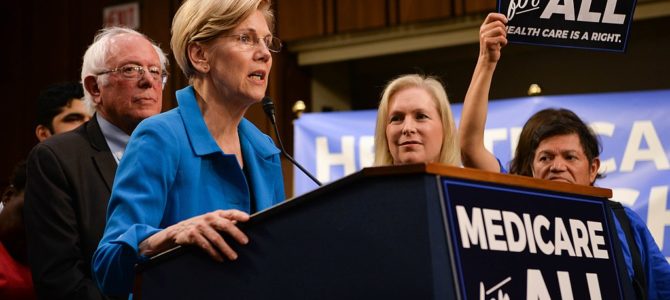
Every week another Democrat announces the formation of a committee to run for president. Before you know it, the Senate will have difficulty getting a quorum east of Iowa because so many of its members are spending their days stumping there in advance of the first-in-the-nation caucuses next February. The field will be too large for party elders to manage, so they must figure out how to maximize its impact, and the key to it is how the Democratic National Committee structures its debates.
As a Republican strategist who lived through the GOP’s 16-candidate clown-car primary debates in 2016, I’d like to offer some advice for Democrats as they approach their own circus-train-sized field.
First, recognize that these debates are the single best windows to get your party’s message out unfiltered. Up to 24 million viewers watched each presidential primary debate in 2016. Viewership of this size calls for many debates—more than the candidates and their handlers will want. The need for Democrats to seek out media exposure unfiltered by the press is less than the GOP’s need, since the filter is kinder to Democrats, but getting super-sized audiences is still difficult to do, and they shouldn’t pass up the chance.
Second, Democrats should take their debates to as many networks as will host them — even to Fox News, in spite of DNC Chairman Tom Perez’s early, misguided decision to exclude the network. The goal should be a broad audience, and the ugly truth is the eventual Democratic nominee will need to peel off some Fox viewers in Wisconsin and Florida at a minimum to win.
Keep in mind that if President Trump merely gets the states won by Mitt Romney, plus red-trending Iowa and Ohio, plus Florida and Wisconsin, he gets 269 electoral votes and will win in a tie-breaker decided by the state delegations to the U.S. House. In their fantasies, Democrats view Fox as only the denizen of cranky old white people, but the mathematical reality is that cranky old white people in Wisconsin and Florida will likely turn the election.
Third, Democrats should seek to promote their debates through the format that works best on live television today: the reality game show. With a projected field of 20 candidates, Democrats will need at least two separate debates each time.
Instead of using meaningless national poll numbers to winnow the field into separate A-team and B-team debates, Democrats should instead use a random drawing to construct the two fields. In 2016, Republicans relied on a witch’s brew average of a bunch of media polls of dubious methodological quality to determine which candidates made the “main” debate and which made the “kids’ table” undercard showcase. The candidates in the first kids’ table debate were all consigned, by the stigma of being in that less relevant debate, to also-ran status the rest of the campaign, even though many were as qualified or more qualified than the blokes on the main stage.
As the world now knows, this reliance on name identification—the underpinning of any early polling—gave Trump not only access to every debate, but the center-stage position and the bulk of the moderators’ attention. Trump used the debate spotlight to hijack the nomination away from the party establishment and its strategists.
Whether that was a good or bad thing in the end is something only history books will tell us, but suffice to say the people constructing the Democratic debates probably don’t want a repeat outcome on their side. Those who rig debates would, after all, prefer the rigging to stick.
Thus far, Democrats have announced that they’ll use some amalgamation of polling, grassroots organization metrics, and fundraising success to sort out their fields. But a big bowl of ping pong balls and a Sharpie marker would make for better television. In fact, every network would clamor to turn the debate draw show into must-see TV like the NCAA tournament selection show that’s going to captivate the nation this weekend.
But unlike the basketball draw, this debate draw television show could happen a dozen times before a dozen debates. To make it even more interesting, Democrats could allow every candidate to exchange places one time with a rival.
Imagine the prospect of Elizabeth Warren swapping debate positions with Amy Klobuchar to better enable her to joust with Bernie Sanders over which one wants to nationalize more sectors of the American economy. Then see if Bernie swapped with Cory Booker subsequently to avoid her. It would reveal the knife fight that every nomination is and attract more viewers every week.
The public appetite on the left for news and information about this nomination fight is impossible to overstate. Liberals want to beat Trump more than they want to breathe. They will gobble up video content on this nomination as fast as it can be digitized. The more debates, the more live debate draws, the more behind-the-scenes melodrama YouTube videos, the more eyeballs and clicks it will attract.
Of course it might be that more exposure to their awkward lurch toward socialism will hurt Democrats’ chances in 2020—but that’s a chance they’ve already decided to take.








